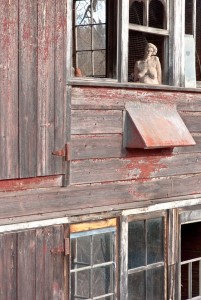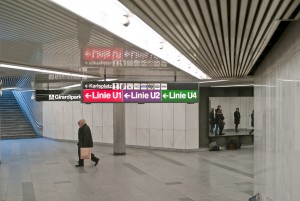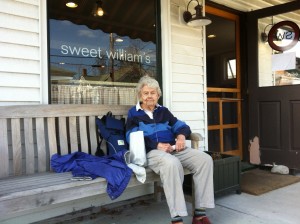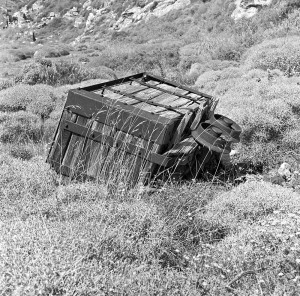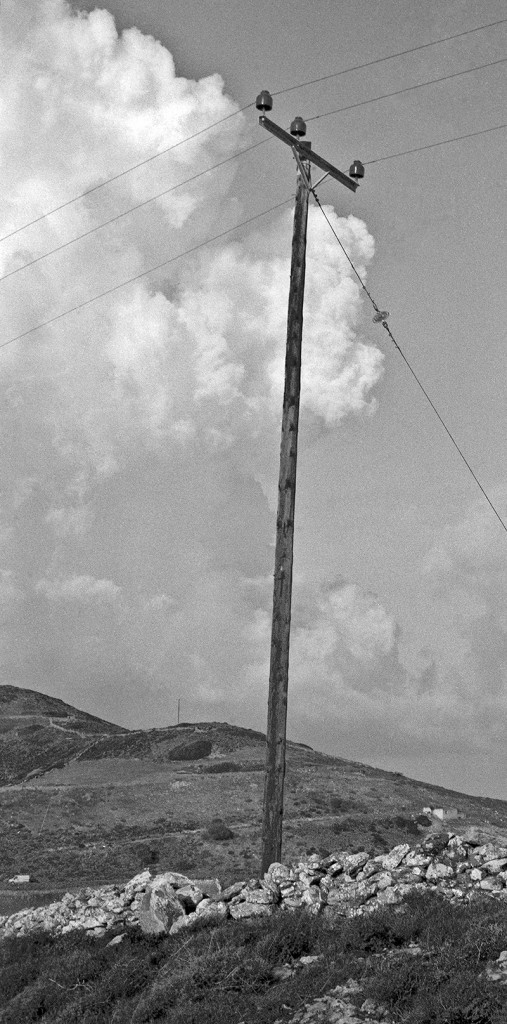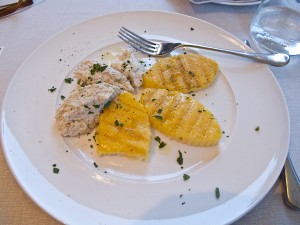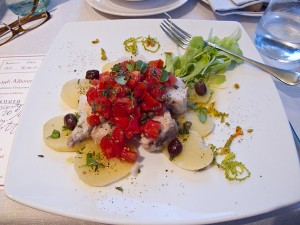We are at the tail-end of our traditional January thaw and I have been taking advantage of the sunlight and warmer days, exposing a lot of film and driving around taking pictures of barns, specifically the worn and weathered wood and metal fittings that adorn them. In the past few years many structures have undergone extensive renovations and finding the older, more run-down buildings is becoming difficult. I have had some success, however, and I will be bringing at least 15 sheets of negatives back to Paros for the spring. These are all close-up images and, I suppose, could be filed under ‘abstract work’. I think of them as realist photography and that the symbolic nature of the aging materials is on parallel with the concept of ‘memento mori‘. Granted, there are no skulls or obvious symbols of mortality in my photos, but I feel that the natural changes of the constructive elements follow a similar philosophical thread.
I have fallen in love with the Voigtlander 75mm lens that I am using on my Leica M8. It is fast, crisp and the compression of the image is a a relief after the relative wide-angles of the 35 and 50mm lenses in my bag. It is, for the moment, my lens of choice. I am enjoying employing shorter focal lengths and it is ideal for hyper-focusing. The camera I have ben using for the MF work has been a Rolleicord belonging to my friend Carol Yeager. I will return it next week before I depart for Greece. I like this little gem. It is the consumer model of its more technical Rolleiflex big brother. The glass is clear, bright and, once again, I am enjoying its shorter focal length abilities. Thank you Carol.
I was at a meeting of the 14th Colony Arts Group the other day and chatted with another artist in regards to emerging talent, foundational work and all that. I kept it simple and did not get too worked up, but something she said bothered me. I was speaking about how important I felt it was for artists/craftspeople/skilled artisans to have a firm foundation from which to progress. She said she wasn’t so sure of that and that many young people are “doing interesting things.” I am sure they are. She reminded me of someone who stresses the ‘thinking outside the box’ mentality. I promised to get back to this in the January 3rd blog entry, and so I will. For me, it is simple:
A fundamental understanding of any set of skills or abilities is necessary to create anything of real artistic beauty and value. Every craftsperson I know (read: artist, bricklayer, poet, sailor) has a strong work ethic, devotion to the craft and a willingness to return to that foundation as an anchor before setting off on their journey. They have also began their journeys as beginners. To assume that one can ‘think outside the box’ a priori is, I feel, false. This is the proof: one cannot think outside the box successfully unless one is knowledgable of its contents. Therefore, fundamentals, foundational experience and education are essential. After that, one can and, I hope, will create whatever he or she wishes.
I cooked professionally for many years. I did not start off at the top or somewhere in the middle. I began as a dishwasher and worked my way up. Now I am a photographer practicing my skills and craft. When I began this stage of my journey I could not roll a piece of film on a reel. Now I compute complex mathematical formulae based on time, temperature, chemistry and film stock when I work in the darkroom. I do this in my head and I do it almost without thinking. This did not happen overnight. Because of practice and education my axis of creativity is greater than it was 10, or even 3, years ago. The odd feeling is that the more I try to ‘think outside the box’, the roomier I find ‘the box’ to be. I am learning that thinking ‘outside the box’ is impossible. There is no box. There is no spoon. (Sorry if there is a preceding ad. Good clip, though.)
JDCM

